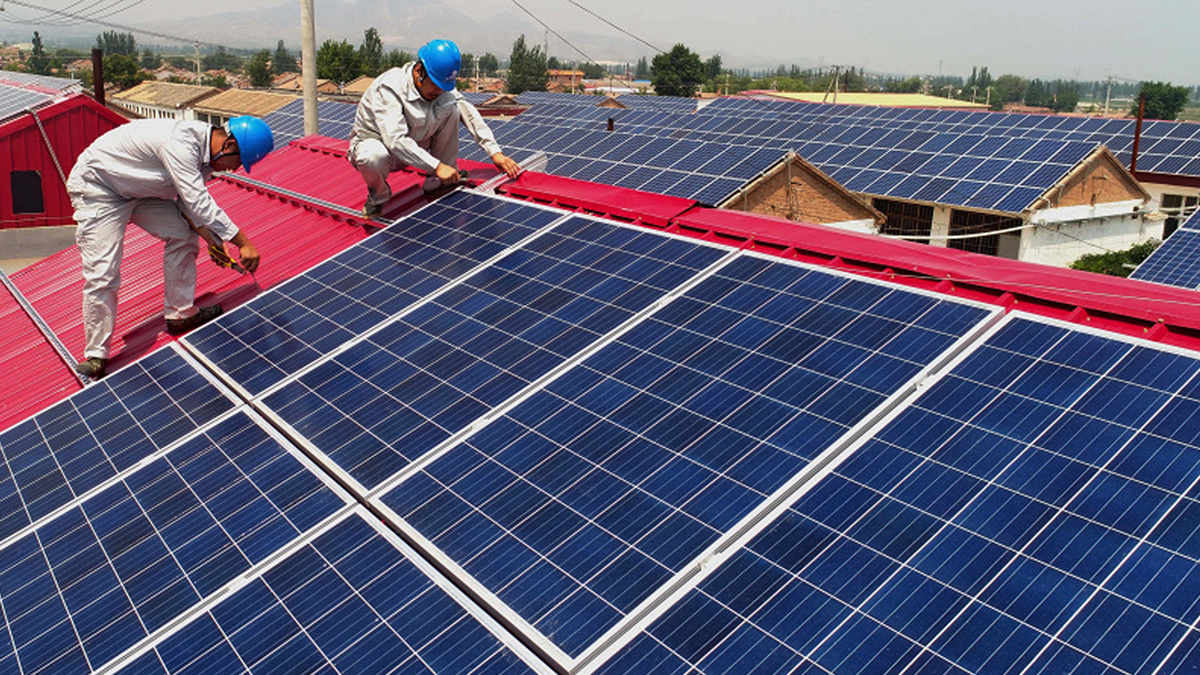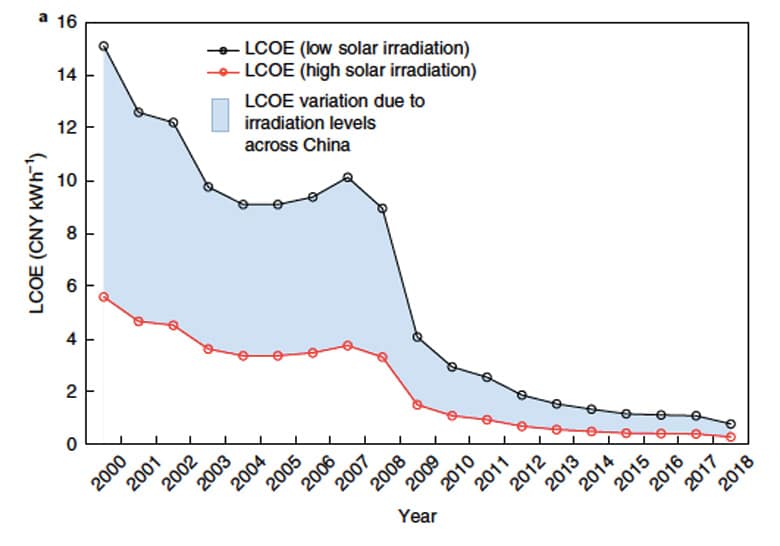
Solar Now ‘Cheaper Than Grid Electricity’ in Every Chinese City, Study Finds

Solar workers tend to photovoltaic panels in Xuanhua District on Nov. 13, 2018 in Zhangjiakou, Hebei Province of China. Chen Xiaodong / VCG via Getty Images
By Josh Gabbatiss
Solar power has become cheaper than grid electricity across China, a development that could boost the prospects of industrial and commercial solar, according to a new study.
Projects in every city analyzed by the researchers could be built today without subsidy, at lower prices than those supplied by the grid, and around a fifth could also compete with the nation’s coal electricity prices.
They say grid parity – the “tipping point” at which solar generation costs the same as electricity from the grid – represents a key stage in the expansion of renewable energy sources.
While previous studies of nations such as Germany and the U.S. have concluded that solar could achieve grid parity by 2020 in most developed countries, some have suggested China would have to wait decades.
However, the new paper published in Nature Energy concludes a combination of technological advances, cost declines and government support has helped make grid parity a reality in Chinese today.
Despite these results, grid parity may not drive a surge in the uptake of solar, a leading analyst tells Carbon Brief.
Competitive Pricing
China’s solar industry has rapidly expanded from a small, rural program in the 1990s to the largest in the world. It is both the biggest generator of solar power and the biggest installer of solar panels.
The installed capacity of solar panels in China in 2018 amounted to more than a third of the global total, with the country accounting for half the world’s solar additions that year.
Since 2000, the Chinese government has unveiled over 100 policies supporting the PV industry, and technological progress has helped make solar power less expensive. This has led to the cost of electricity from solar power dropping, as demonstrated in the chart below.

Chart showing the historical levelized cost of electricity (LCOE) from solar power in China.
Source: Yan et al. (2019)
In their paper, professor Jinyue Yan of Sweden’s Royal Institute of Technology and his colleagues explain that this “stunning” performance has been accelerated by government subsidies, but has also seen China overinvesting in “redundant construction and overcapacity.” The authors write:
“Recently, the Chinese government has been trying to lead the PV industry onto a more sustainable and efficient development track by tightening incentive policies with China’s 531 New Policy.”
The researchers say the subsidy cuts under this policy in 2018 were a signal that the government wanted to make the industry less dependent on state support and shift its focus from scale to quality.
This, they say, has “brought the industry to a crossroads,” with discussions taking place in China about when solar electricity generation could achieve grid parity.
In their analysis, Yan and his team examined the prospects for building industrial and commercial solar projects without state support in 344 cities across China, attempting to gauge where or whether grid parity could be achieved.
The team estimated the total lifetime price of solar energy systems in all of these cities, taking into account net costs and profits, including project investments, electricity output and trading prices.
Besides establishing that installations in every city tested could supply cheaper electricity than the grid, they also compared solar to the price of coal-generated power. They found that 22% of the cities could build solar systems capable of producing electricity at cheaper prices than coal.
Embracing Solar
Declining costs of solar technology, particularly crystalline silicon modules, mean the trend in China is also playing out around the world. In May, the International Renewable Energy Agency (IRENA) said that by the beginning of next year, grid parity could become the global norm for the solar industry.
Kingsmill Bond, an energy strategist at Carbon Tracker, says this is the first in-depth study he has seen looking at city-level solar costs in China, and is encouraged by this indication of solar becoming ever-more competitive. He tells Carbon Brief:
“The conclusion that industrial and commercial solar is cheaper than grid electricity means that the workshop of the world can embrace solar. Without subsidy and its distorting impacts, and driven by commercial gain.”
On the other hand, Jenny Chase, head of solar analysis at BloombergNEF, says the findings revealed by Yan and his team are “fairly old news” as the competitive price of rooftop solar in China has been known about for at least a year.
She notes that this does not mean there has been a huge accompanying rollout of industrial and commercial solar, and says this is partly because of the long-term thinking required for investment to be seen as worthwhile.
Reposted with permission from our media associate Carbon Brief.

 233k
233k  41k
41k  Subscribe
Subscribe 